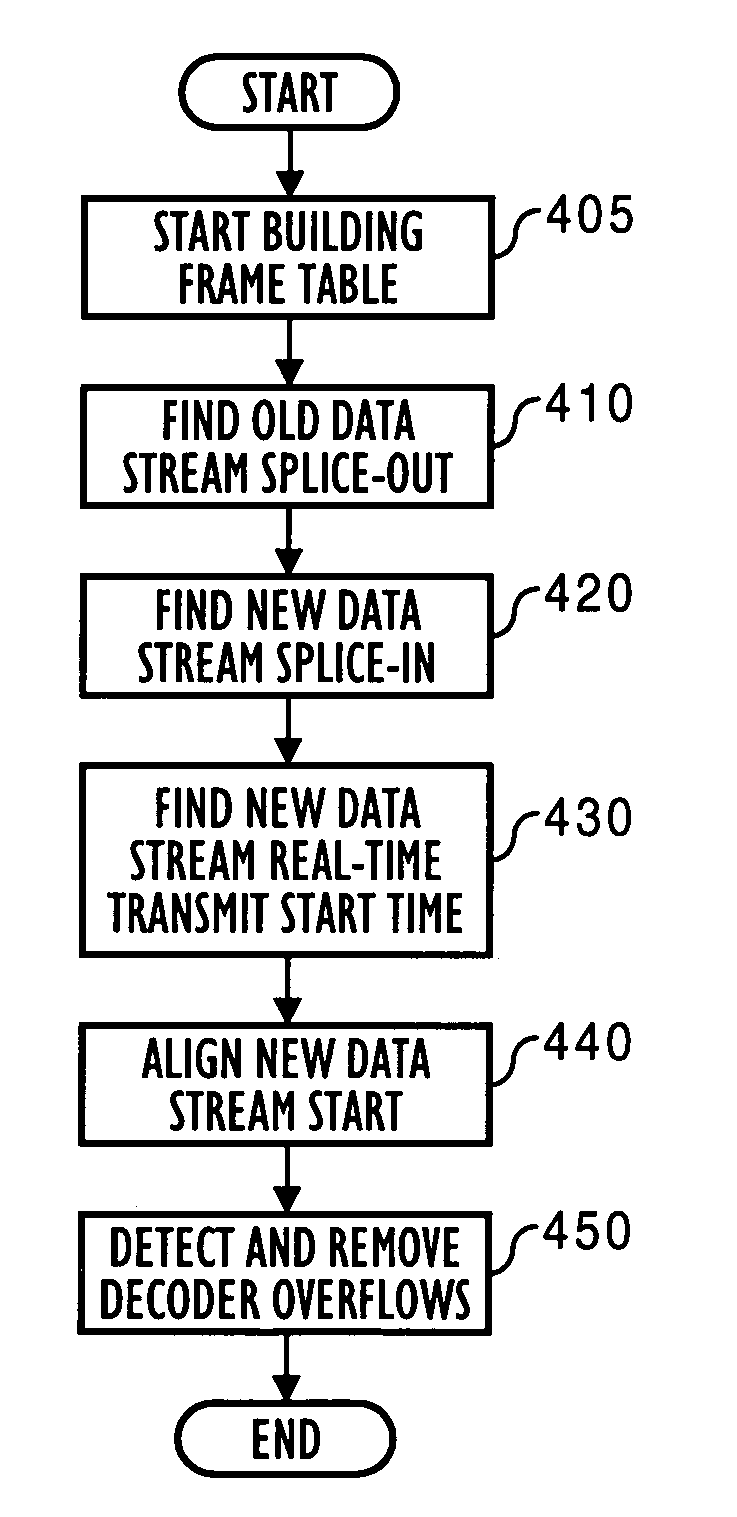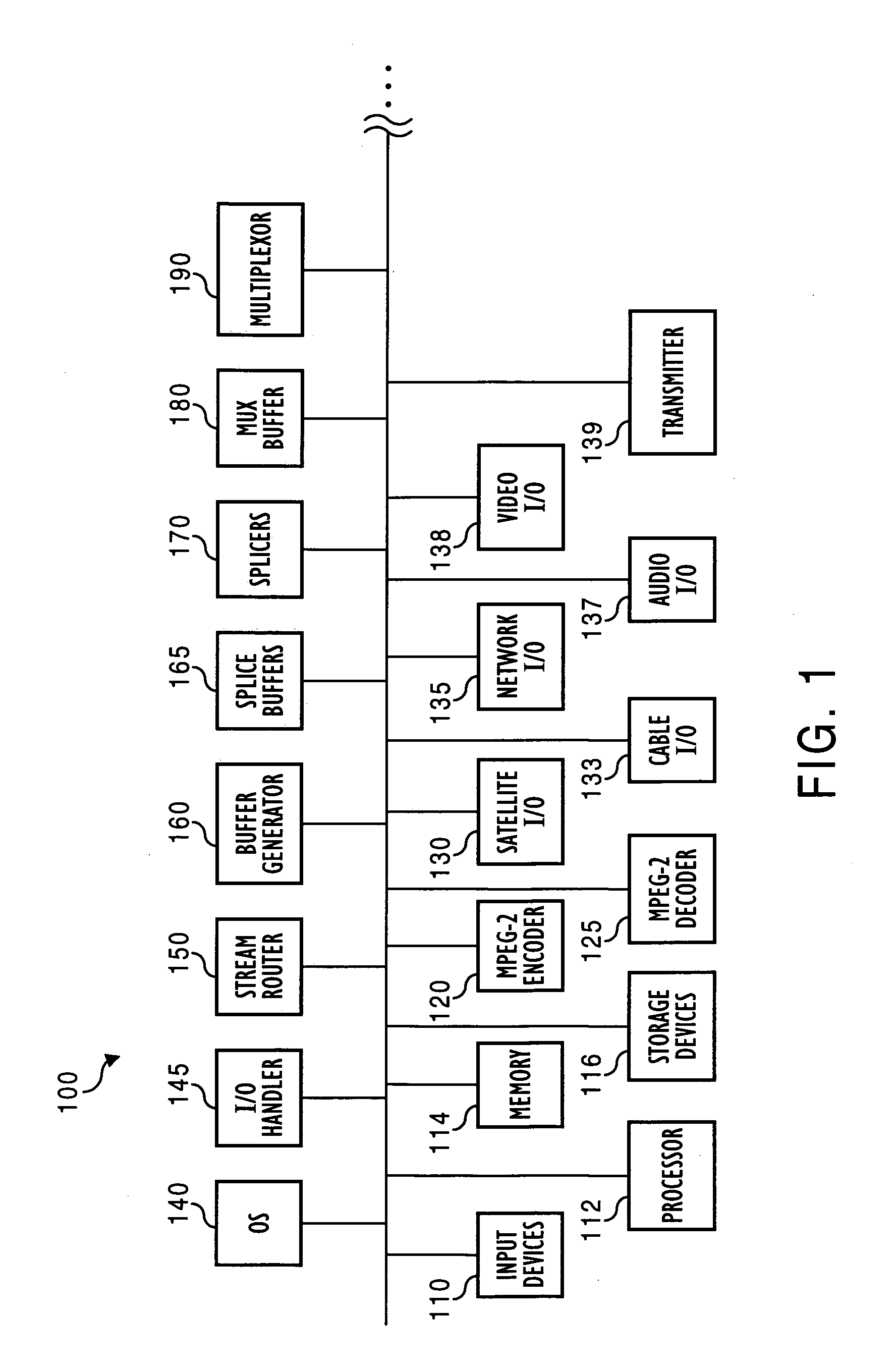Apparatus and method of splicing digital video streams
a digital video and apparatus technology, applied in the field of multimedia data stream processing, can solve the problems of insufficient splicing, further complicated splicing of digitally encoded data streams, and inability to provide requisite timing or splicing point parameters in conventional encoder and decoder specifications, so as to avoid the expense, visual artifacts, and lost air time
- Summary
- Abstract
- Description
- Claims
- Application Information
AI Technical Summary
Benefits of technology
Problems solved by technology
Method used
Image
Examples
Embodiment Construction
[0049]For clarity sake, the embodiments discussed herein will be directed primarily toward splicing together digitally encoded data streams (“data streams”) that are encoded and decoded in accordance with the MPEG-2 specifications. More specifically, the discussion will focus on real-time splicing of an ongoing television program broadcast with a commercial message, the splicing being conducted at a cable broadcasting station for transmission to cable receivers at consumer locations. The discussion will further be directed toward a splicer application program that is embedded within a preferred system for receiving, preparing, storing, retrieving and transmitting digitally encoded multimedia data streams.
[0050]It will be understood by those skilled in the art, however, that many digital encoding / decoding specifications exist and are being introduced (in addition to the MPEG specifications) to which the present invention is readily applicable. Examples include, but are not limited to...
PUM
 Login to View More
Login to View More Abstract
Description
Claims
Application Information
 Login to View More
Login to View More - R&D
- Intellectual Property
- Life Sciences
- Materials
- Tech Scout
- Unparalleled Data Quality
- Higher Quality Content
- 60% Fewer Hallucinations
Browse by: Latest US Patents, China's latest patents, Technical Efficacy Thesaurus, Application Domain, Technology Topic, Popular Technical Reports.
© 2025 PatSnap. All rights reserved.Legal|Privacy policy|Modern Slavery Act Transparency Statement|Sitemap|About US| Contact US: help@patsnap.com



